If you should go up to the hills tonight you’re sure of a big surprise
If you should go up to the hills tonight you’ll see better before sunrise…
(Misquoted from the Teddy Bears’ Picnic.)
Radio Hams continue to shine as brightly as ever and in ever new unexpected realms of communication and Ham-electronics wizardry!…
In a passing discussion earlier in the day at the LBW hut, I was invited up onto the hills and into the night to see and hear various glowing lights from afar. In days of old, our ancestors had near-speed-of-light communication by using burning beacons on hilltops. Here, we have a slightly revamped idea using consumer-grade 500mW LEDs, a £1 Fresnel lens, bits of wood and tape, and a few bits of analog electronics. Also needed is a little patience, a clear view, and a keen eye for compass bearings…
Thus, we demonstrated Ham Radio communications at it’s finest using 2m radio, mobile phones, and the highly experimental red-LED light beam audio modulated optical link. Fantastic stuff. Amazing it works! It was quite spooky to see an orange-red light on a very distant hill wink into life right on cue to then speak at you!
The Ham Radio optical communication is a rapidly developing part of the hobby/research with various records getting updated/broken almost weekly. During this particular week, distances up to an 80km direct link were achieved. All on just a 500mW LED and a £1 Fresnel lens!
At the moment, the system is in some ways as crude as the first spark transmitters used in the very early days by Marconi. With that, there is a surprising amount of optical interference from the light pollution from streetlights, especially so when the streetlights reflect off the underside of clouds or if they diffusely illuminate haze pollution. The present commonly used analog system uses ‘baseband amplitude modulation’. There are new developments for analog modulating the light beams in more elaborate ways so as to move the wanted audio signal ‘out of the way’ of the noise from the streetlight pollution. Another more elaborate move would be to use digital techniques.
For this evening, after four successful contacts we hurriedly packed up for the night to make it back nice and timely for last orders back at Castleton.
Thanks to Bernie for an interesting demo and a very good demo of Amateur Radio in action. During the evening, we even got an interested look-in by TWO Mountain Rescue landrovers 🙂


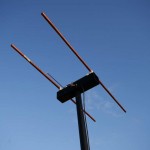
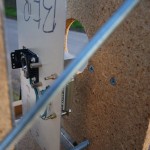
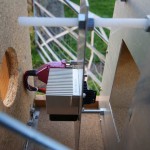
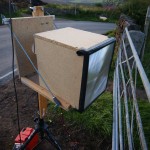
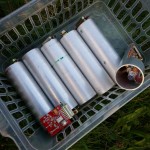
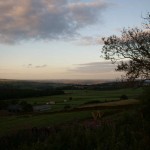
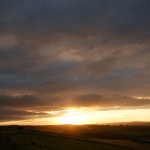

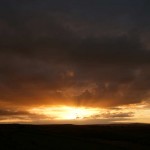
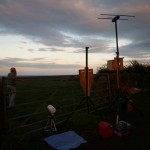
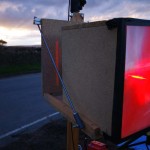
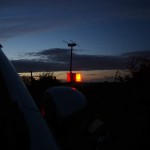

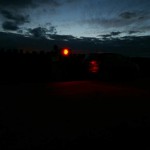
For some timely developments in recent space science news, a similar means of light communication is going to be tested for the first time on the new NASA probe LADEE now on its way to our moon:
Nasa’s LADEE Moon probe lifts off
The Lunar Laser Communication Demonstration (LLCD) will be NASA’s first high-rate, two-way, space laser communication demonstration
Space Laser To Prove Increased Broadband Possible
ESA to Catch Laser Beam from Moon Mission
So… All for higher data rates, for lower power, and for less bulky equipment. Quite a trio of improvements over present technology using radio.
Compared to the fabulous work being done at such as NASA and ESA and elsewhere, there is still a special expertise and down-to-earth ingenuity needed to know what can be compromised and how to still make the technology work even with merely a handful of £1 components and amidst the vagaries of terrestrial noise and interference. All fantastic stuff! 🙂
And for the results of some very fast far flung flying light:
NASA Completes LADEE Mission with Planned Impact on Moon’s Surface
ESA and others will be using that tech elsewhere… Watch that space!
Meanwhile, back down here on planet Earth, a Scottish-based professor appears to be doggedly trying to commercialize from long ago what he is calling “LiFi” to piggy-back onto the use of the hugely successful radio-based WiFi. The recent ‘game-changer’ is the (surprise, surprise 😉 ) increasing uptake of using LEDs for ‘eco-lighting’ that are nicely suitable for high speed modulation for blinking fast data transfer faster than your eye can blink! Is this where the old ideas of IrDA are Borg-ed with WiFi-style device use to shine upon a canny adopted Scot?…
In usual The Register frivolous illumination:
Forget Wi-Fi, boffins get 150Mbps Li-Fi connection from a lightbulb
(Unfortunately, the Wikipedia entry for Li-Fi reads like a Marketing infomercial and sheds little useful light 🙁 )
The ‘clever’ bit (bad pun!) for all that is to achieve useful two-way data transfer rather than just a unidirectional datastream broadcast. Assuming asymmetric operation is acceptable, can one trick be to squeak back small uplink packets during mains zero-crossing off periods?… ALL lights must be synchronized also?…
Using high power (cheap) visible light LEDs to transmit data is certainly a good idea, but from my view there looks to be a few awkward practicalities to solve before making general lighting devices useful and cost effective as network/internet ‘hot spots’.
NASA hooks up the ISS with fast flying video beams of laser light:
A Laser Message from Space
That is no mean feat with the rapid flyby of the ISS appearing to ‘wobble through’ the turbulence of the atmosphere…
I still think the Ham Radio version with the £1 plastic sheet of Fresnel lens is also no mean feat in itself!
All good pioneering stuff shining brightly 🙂